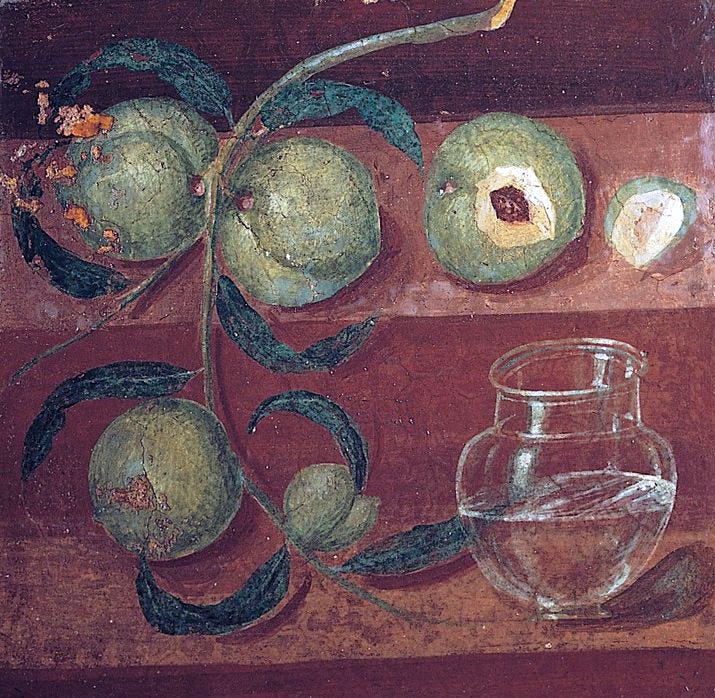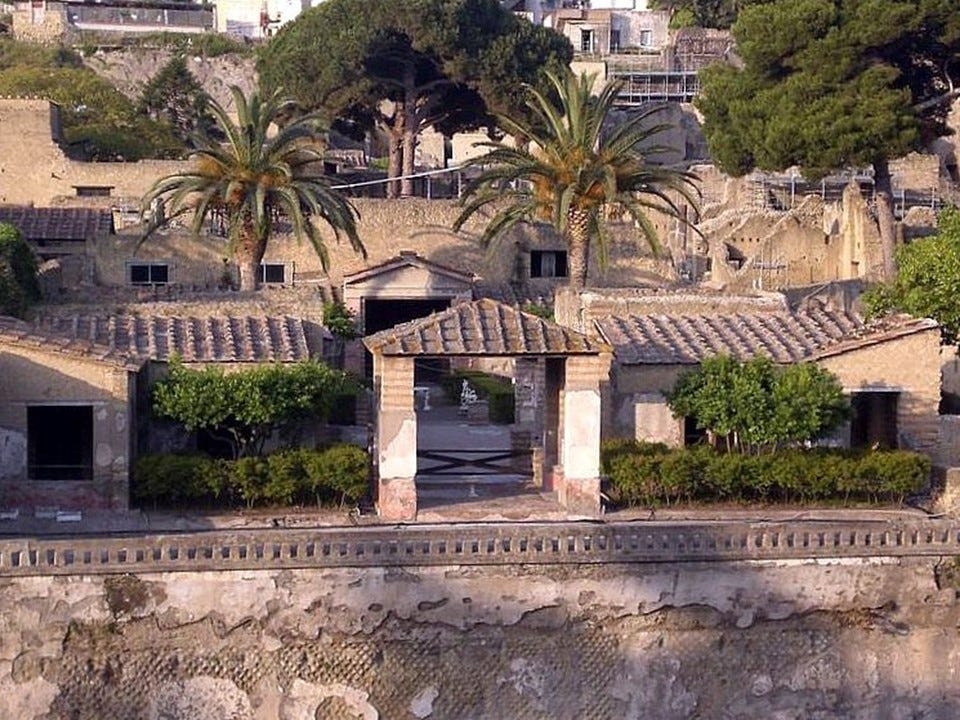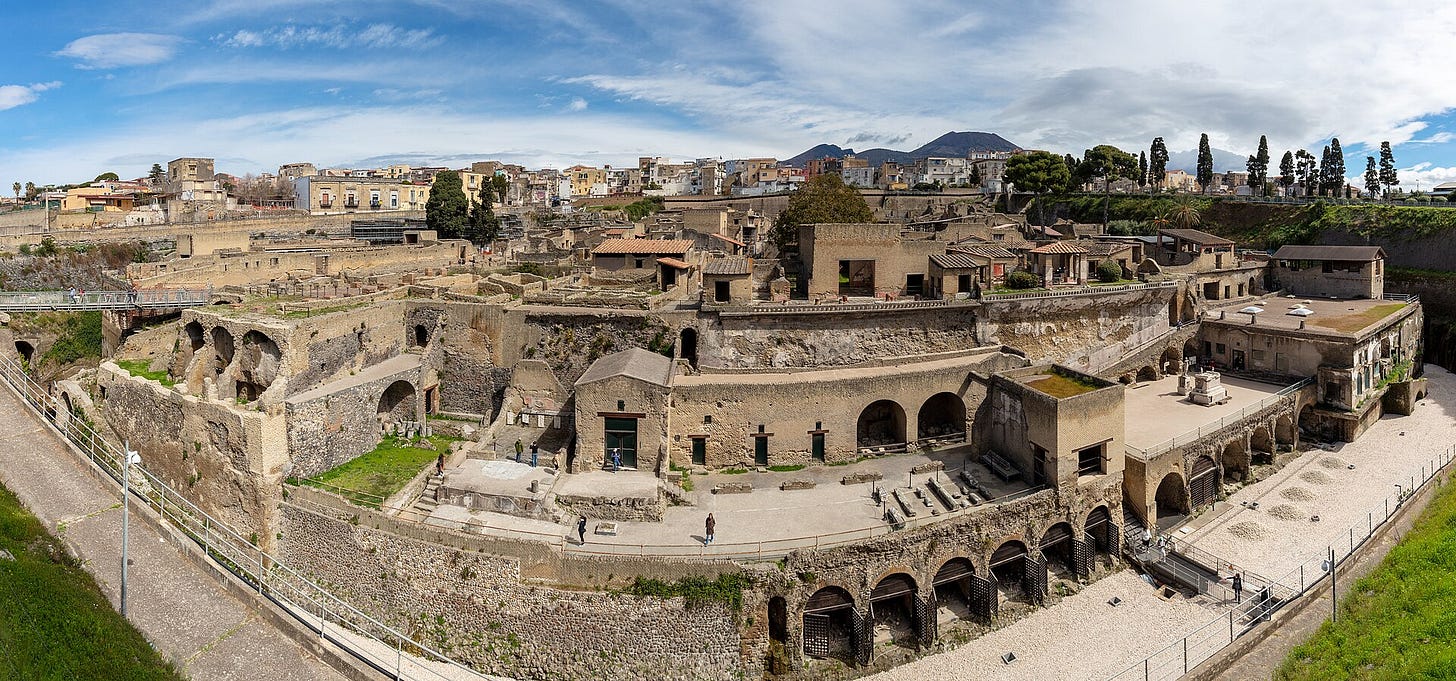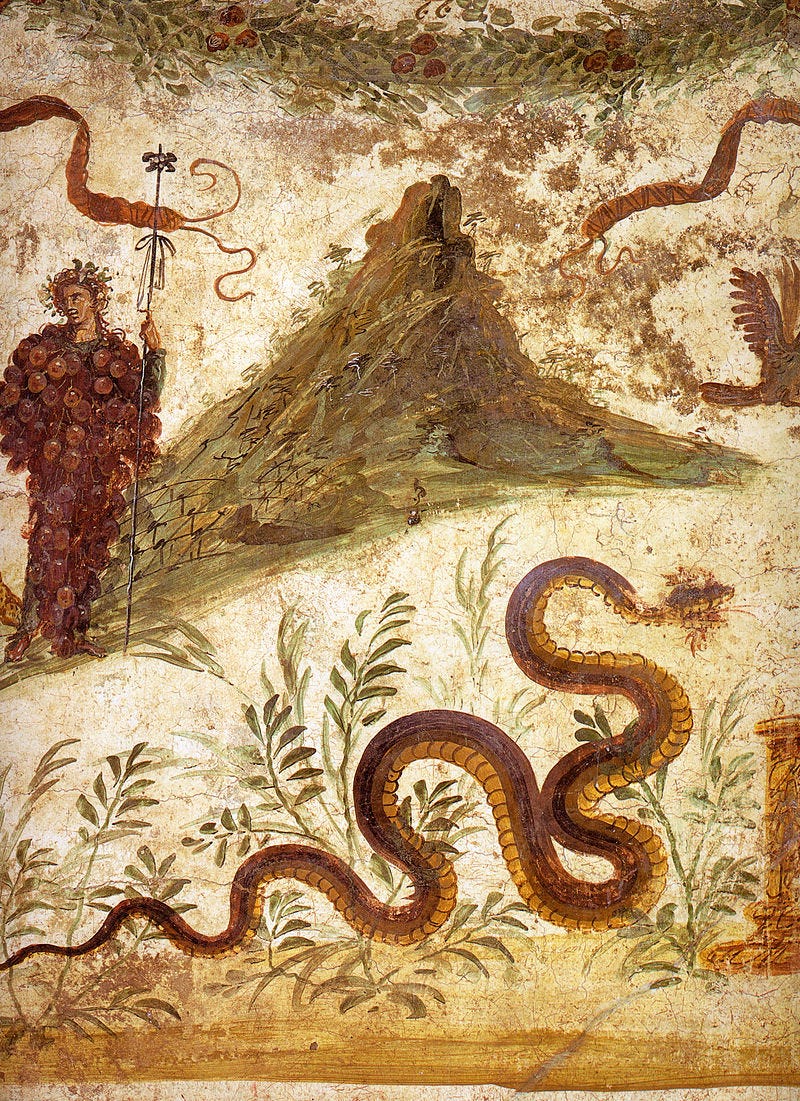Still Life with Peaches and Water Jar, Herculaneum, 62-69 CE
A Still Life - Ekphrastic Writing Course Part One
The News in Brief:
Everything on offer for paid subscribers Here.
Buy my nature-landscape memoir The Ghost Lake Here.
Buy my latest poetry collection, Blackbird Singing at DuskHere.
This is a post for paid subscribers. It contains the first part of a three part ekphrastic writing course built around still life art. Below the paywall you’ll find the notes and writing prompts that you can use in any way you want: as a journalling prompt, to create poetry, to tap into a personal narrative with creative non fiction/memoir. This is a series of posts designed to create art from art, and to connect to the moments that might happen outside of the frame of the still life painting. Not a subscriber? You can rectify that here:
Welcome to Herculaneum. Today we’re visiting The House of the Deer, built in the reign of Emperor Claudius and sumptuously decorated with wall paintings. We are going to be looking at one part of the house today, and one painting in particular.
Today I want us to imagine the moments that surround the painting; the thin slivers of time caught mid moment, the sensory experience of The House of the Deer.
Herculaneum was a wealthy town, a seaside retreat. Many of the buildings were opulent holiday houses, places for socialising and relaxing, and much of the art reflects this.
Image by By Diego Delso
Still Life with Peaches and Water Jar is part of a series of paintings. They’re a genre of still life paintings known as Xenia paintings, paintings depicting hospitality; the items that a wealthy host would offer their guests. These sorts of paintings are usually found in reception rooms. You can see in the images below, taken from the museum of archaeology in Naples, Rome, that there is a huge variety of food on offer. These are paintings that are inviting the visitor to recognise not only the hospitality of the host, but the wealth and status of the host.
In these paintings I can see rabbit, lobster, squid, mushrooms, peaches, figs, walnut, hare - reasonably familiar animals that even if we haven’t eaten them, we are able to recognise that they are eaten still. Other animals/foods are less familiar, less easily recognisable. What do you recognise? What foods in these pictures have you experienced? In the top left picture is a bird that looks like a water hen, it’s feet look water-hen-ish. In the top of that same picture I think is probably red snapper. And a beautiful jug of red wine (probably) with a serving bowl of glass. In the middle top image the bird looks a little starling-like. In that panel there’s an implement that looks like a toasting fork and a decanter for something, and some spiky things that look a little bit like vertebrate…but I’m at a bit of a loss, there are muscles too. In the rabbit panel there are grapes, and something game-like (pheasant-like) and an item which looks like a tomato, but cannot be a tomato as tomatoes, that stalwart of Italian cooking, did not arrive in Italy until the 16th century. Perhaps a pomegranate? Lots of game birds and some birds that look a little kestrel like, something that might be a chicken, and an orange and a big pot of slippery eels. Peaches, nuts, figs in a silver bowl, red wine in a beautiful glass cup. Perhaps there is something here that you can identify that I’m unfamiliar with, please share in the comments!
What an incredible sight to behold for the visitor, as they stepped into the light and airy house, the scent of the sea on the breeze, the herby scent of the garden, the sound of water running through the fountains, servants moving about preparing welcome. What could possibly go wrong on a day like this?
Spoiler alert.










